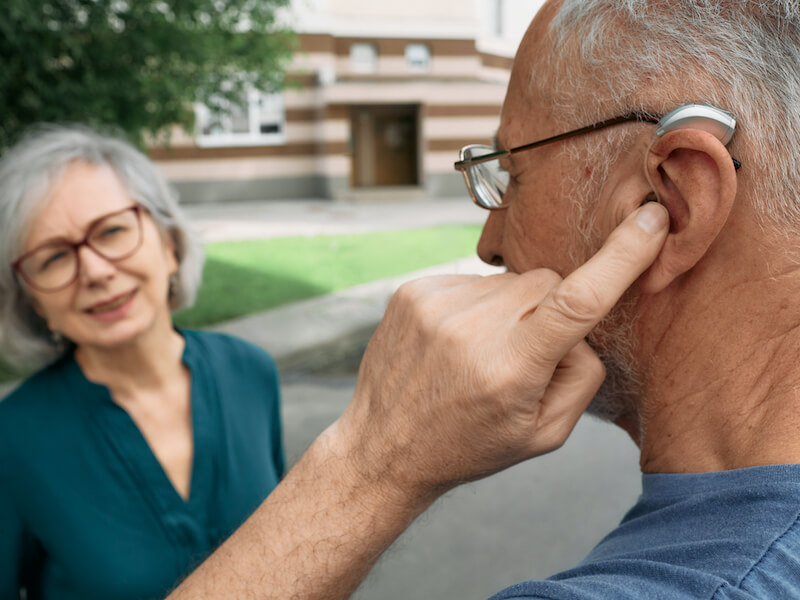
Have you ever had your internet disappear just as you’re almost to the best part of your favorite Netflix movie? You sit and watch that spinning circle instead of learning about who won that cooking competition. All you can do is wait around for it to come back. Is it your internet provider, modem, router, or maybe it will simply come back on its own? It kind of stinks.
Technology can be tremendously aggravating when it doesn’t work properly. Your hearing aids definitely fall into this category. Most of the time, your hearing aids will give you the means to stay connected to loved ones, have discussions with co-workers, and keep up with your neighbors.
But your symptoms of hearing loss can suddenly become extremely frustrating when your hearing aids quit working. You’ve been disappointed by the technology you count on. Why would your hearing aids just stop working? So what should you do? Here are the three prevalent ways your hearing aids can malfunction and how to troubleshoot and identify them.
Hearing aids can often have three common issues
Even though hearing aids are sophisticated technology, individuals may experience three common problems with them. Let’s take a look at possible causes of these issues and potential fixes.
Whistling and feedback
So, perhaps you’re attempting to have a chat with your family or watch your favorite show and you start to hear a horrific whistling noise. Or maybe you notice some feedback. You begin to think, “this is strange, what’s up with this whistling”?
Feedback and whistling can be caused by these possible issues:
- You may not have your hearing aids correctly positioned in your ears. Try taking them out and putting them back in. You can also try reducing the volume (if this works, you might find some short-term relief, but it also likely means that the fit is indeed not quite right and you should speak with us about it).
- For people who use behind-the-ear hearing aids, the tubing that attaches your earmold with your hearing aid may have become compromised. Try to examine this tubing as well as possible and make certain nothing is loose and the tube does not appear damaged.
- The functionality of your hearing aid can be impacted by earwax buildup in your ear canal. You’ll notice this comes up fairly regularly. That includes causing your hearing aids to whistle or feedback. If possible, you can attempt to clean some earwax out of your ear or talk to us about the best way to do that (don’t use a cotton swab).
Depending on the root cause of the feedback, we can help you resolve these issues if you can’t figure them out on your own.
Hearing aids not producing sound
Your hearing aids should make, well, sound. That’s what they’re made to do! Something has definitely gone wrong if you don’t hear any sound coming from your hearing aid. So what could cause hearing aids to lose all sound? Here are a few things to watch for:
- Batteries: Make sure your batteries are completely charged. And whether your batteries are rechargeable or not, it may be worth swapping them out for fresh ones.
- Your settings: Cycle through the custom settings if your device has them. Your hearing aids may think you’re in a very large room when you’re actually in a little room because the setting is wrong. This balance could throw off the sound you’re hearing.
- Power: Look, we’ve all forgotten to turn on the hearing aid before. Make certain that isn’t the problem. Then you can eliminate that as possible problems.
- Earwax buildup: Here we go again with the earwax! Inspect your device for indications of earwax on the microphone or speakers or any sensitive parts. You want to make certain the device is nice and clean.
If these steps don’t address your issues, we may have the answers. Whether repair, maintenance, or replacement is your next step, we will be capable of helping you figure that out.
When you have your hearing aids in, your ears hurt
What if your hearing aids work perfectly, but every time you put them in your ears, your ears start aching? And you’re probably thinking: why do my ears ache when I use my hearing aids? This sort of discomfort isn’t exactly conducive to wearing your hearing aids on a day-to-day basis. So, what could be causing it?
- Fit: The most evident problem can be the fit. After all, most hearing aids work best when the fit is nice and snug. So when your hearing aids aren’t fitting quite right, there can be some pain. Many hearing aids can be personalized to your specific ears. The better the fit, the fewer problems you’ll have with pain over the long run. If you come in for a consultation, we can help you get the best fit for your device.
- Time: Getting used to your hearing aids will take a little while. Each person will have a different adjustment period. It’s worth talking about when you buy your hearing aids so you have a reasonable concept of how long it might take you to get comfortable with your devices. Also, talk to us about any discomfort you may be having.
Take your new hearing aid out for a test ride
Before you commit to a pair of hearing aids, it’s a smart plan to try them out for a while. Most of the time we will have loaner pairs for you to try out before you make a decision.
In fact, we can help you figure out the best kind of hearing aid for your needs, adjust the fit to match your ears, and help you handle any ongoing problems you may have with your devices. In other words, when your devices stop working, you’ll have a resource that can help!
And that’s most likely more dependable than your internet company.